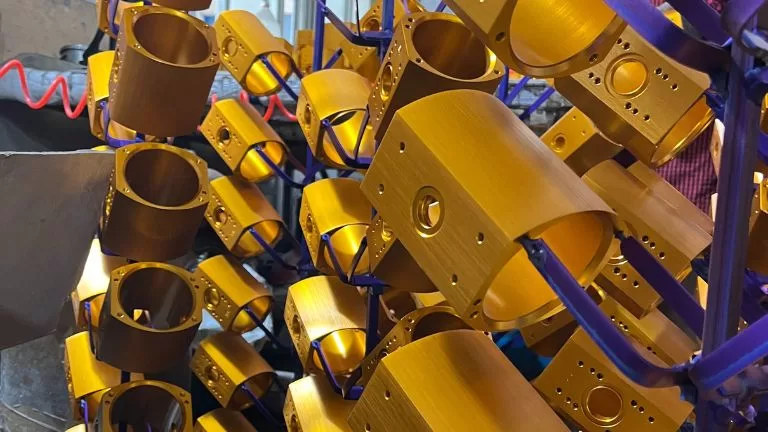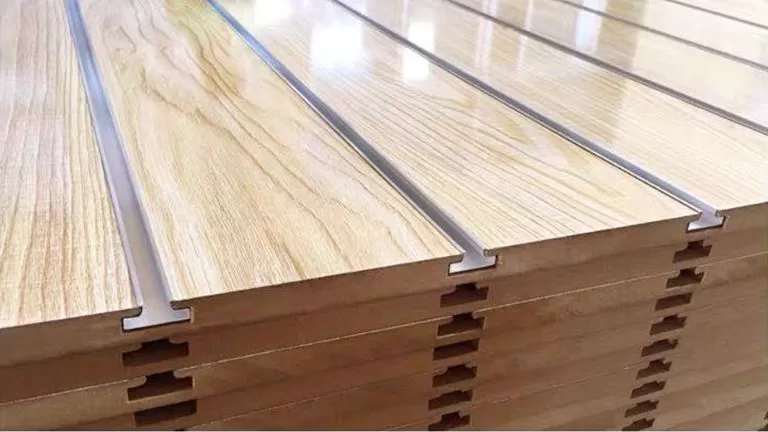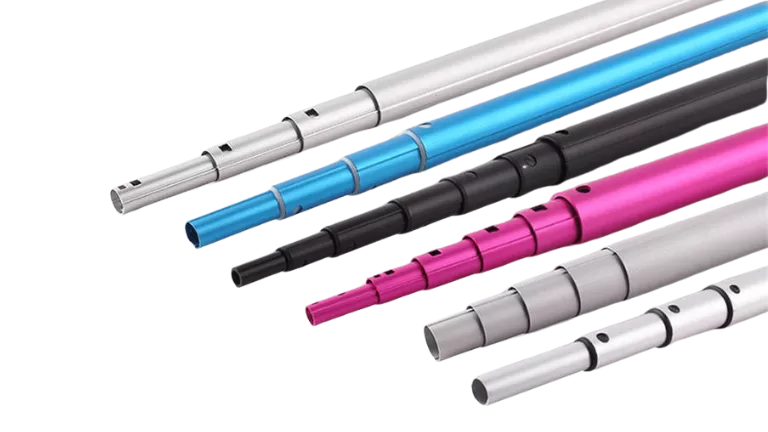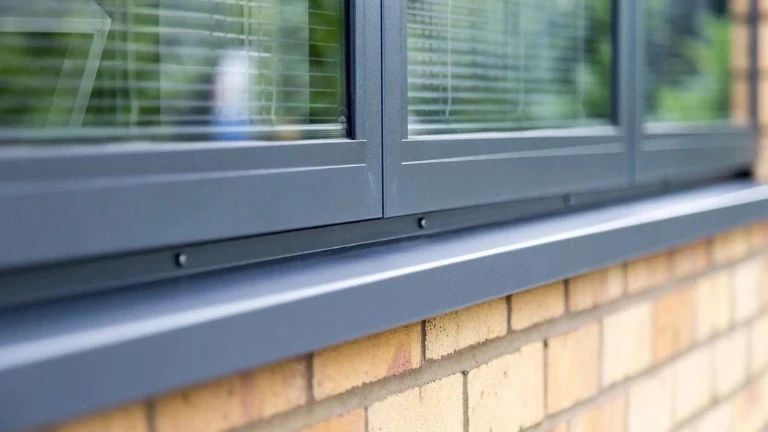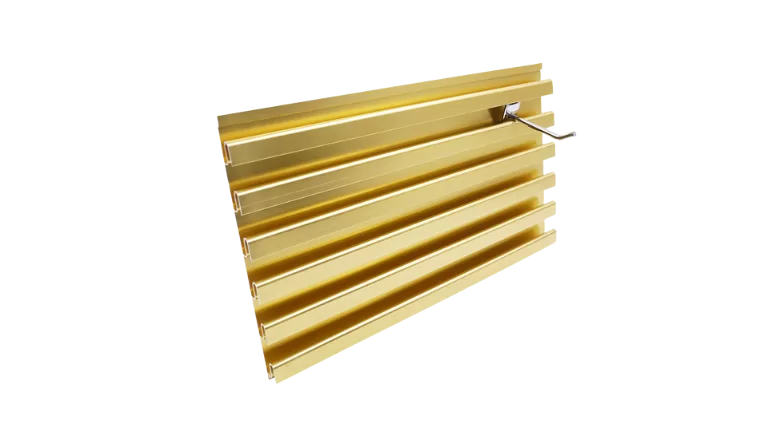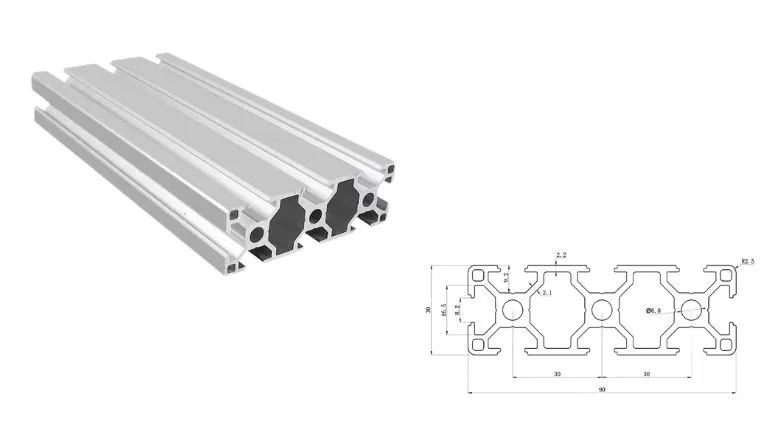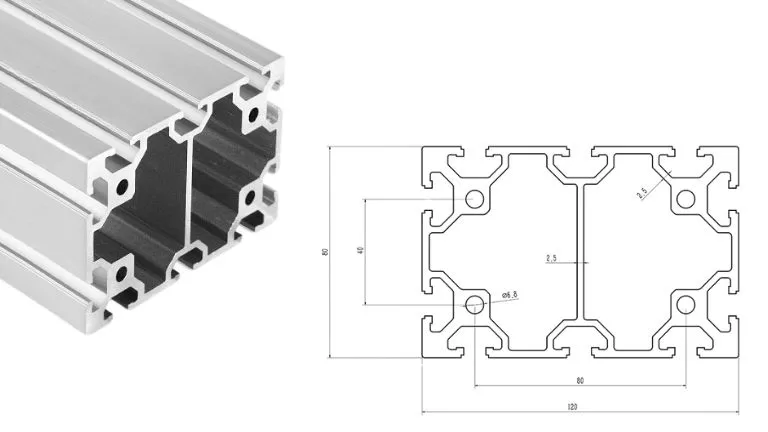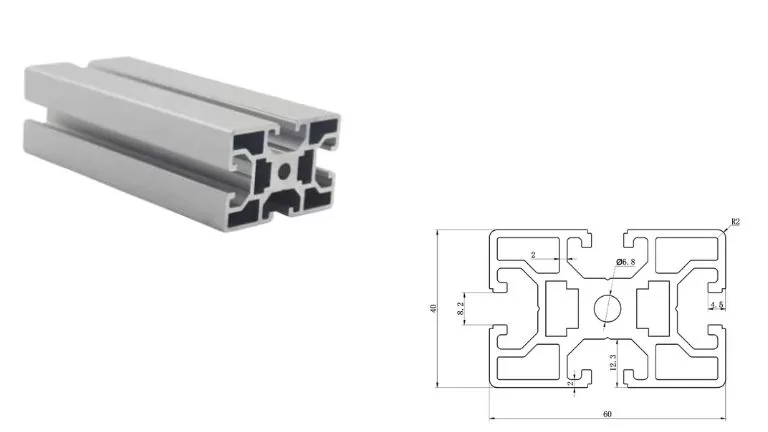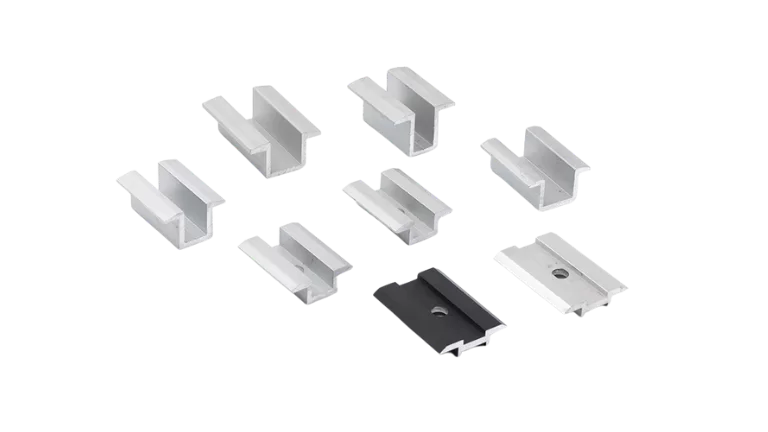Anodized Aluminum Heat Sink Solutions
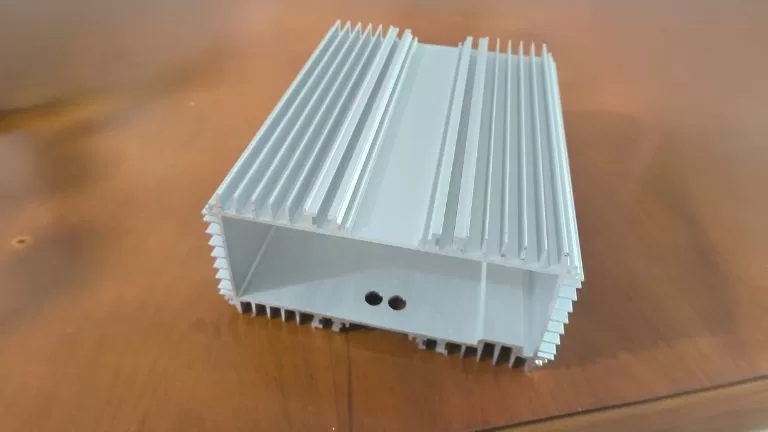
Anodized Aluminum Heat Sink is a widely used component for heat dissipation in electronic devices, primarily composed of aluminum alloy material. Through anodizing treatment, the performance and durability of this heat sink are significantly enhanced. Anodization not only improves the heat dissipation efficiency of the heat sink but also increases its corrosion resistance and aesthetic appearance, making it more suitable for various environmental conditions.
HTS-ALU, as a one-stop solution provider for heat sinks, boasts an advanced anodizing treatment production line that offers a variety of anodizing services, including standard anodizing, colored anodizing, and hard anodizing.
Advantages of Heat Sink Anodizing
Anodizing is an electrochemical process primarily used for the surface treatment of aluminum and aluminum alloys. During the anodizing process, the aluminum acts as the anode and is immersed in an electrolyte solution. By applying an electric current, an oxidation reaction occurs on the surface of the aluminum, resulting in a controllable thickness of the oxide layer. This oxide layer not only possesses excellent insulation properties but also exhibits good wear resistance and corrosion resistance, effectively protecting the aluminum heat sinks from environmental damage.
Electrical Insulation
The anodized layer provides excellent electrical insulation with a breakdown voltage of approximately 1,500 volts, minimizing the risk of electrical shorts. This is essential for electronic applications, ensuring safe operation in sensitive devices and potentially reducing maintenance costs by up to 30%.
Wear Resistance
Anodizing enhances the surface hardness of aluminum to about 60 to 70 HRC, increasing resistance to scratches, wear, and corrosion. This durability allows anodized aluminum heat sinks to withstand mechanical stress, extending their lifespan by approximately 50% compared to untreated aluminum and reducing the frequency of replacements.
Aesthetic Appeal
Anodized aluminum heat sinks can be produced in up to 10 different colors, providing design flexibility and enhancing brand identity. This visual appeal can increase consumer interest and potentially boost sales by up to 20% in competitive markets.
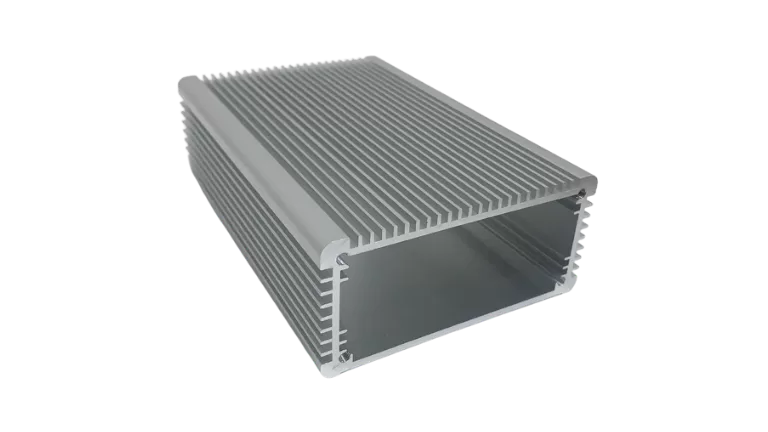
Silver Anodized Finish for Heat Sinks
The silver anodized finish for heat sinks preserves the aluminum material’s luster. The anodization process typically results in a coating thickness of 10-15 micrometers (µm), which can be increased to 25 µm through hard anodizing. Prior to anodization, surface treatments such as sandblasting or brushed finishing can enhance adhesion and surface texture. This treatment improves corrosion resistance and wear resistance while ensuring excellent thermal performance, making it a preferred choice for many electronic devices.
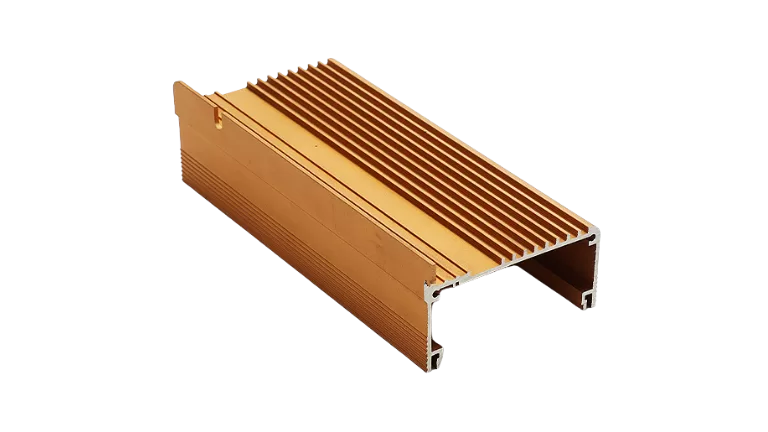
Colored Anodizing for Heat Sinks
Colored anodizing for heat sinks adds a vibrant range of color options, enhancing aesthetics and versatility. This treatment improves the surface's corrosion resistance and wear resistance, allowing the heat sink to maintain its performance while offering various appearances. For those requiring superior protection or more vibrant colors, electrophoretic coloring can be applied, making it ideal for modern, diverse electronic product designs.

Hard Anodizing for Heat Sinks
Hard anodizing is a surface treatment technique that provides heat sinks with exceptional hardness and wear resistance. Compared to standard anodizing, hard anodizing creates a much thicker oxide layer, allowing for thicknesses of up to 65 micrometers (µm). This significantly enhances the durability and impact resistance of the heat sink. This method is particularly suitable for applications requiring high strength and long-term stability, ensuring that the heat sink operates effectively even in extreme environments, making it an ideal choice for high-end industrial and electronic applications.
Anodizing Before Machining
When anodizing is done before machining, the aluminum surface receives a protective oxide layer first, which enhances corrosion resistance and wear resistance. However, any areas that require cutting or shaping do not get anodized, which means those sections will need to be treated once they are machined. This method can lead to a cleaner finish on the machined areas but may complicate the process, as some steps could be needed to remove or manage the oxide layer during machining.

Anodizing after Machining
On the other hand, machining before anodizing can increase labor costs and production time. This approach ensures that all surfaces, including machined areas, receive the protective anodized finish. However, it can be more time-consuming since the anodized layer needs to be uniformly applied afterward. The additional steps needed for cleaning and preparing machined surfaces can also raise production costs, making this method less efficient overall compared to anodizing first.
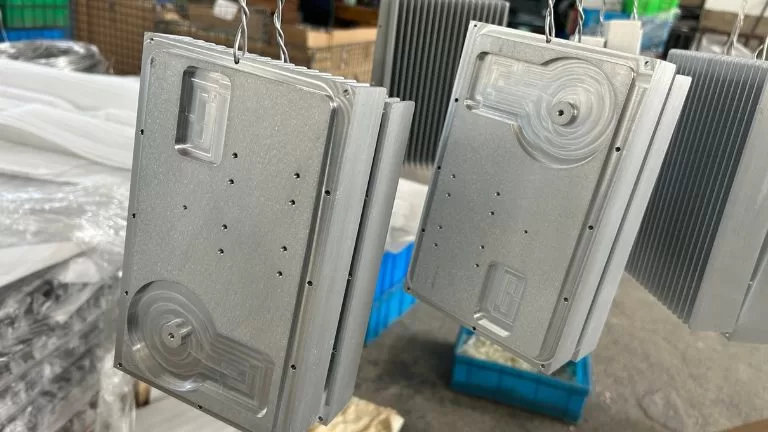
Applications of Anodized Aluminum Heat Sinks
(1) Electronic Devices
Anodized aluminum heat sinks are widely used in electronic devices such as computers, cameras, and LED lighting fixtures to dissipate heat generated by these components, ensuring stable and efficient operation.
(2) Automotive Industry
In the automotive industry, these heat sinks are commonly employed in critical components like engines and transmissions to dissipate heat and maintain optimal operating temperatures, enhancing performance and safety.
(3) Household Appliances
In household appliances and audio equipment, most high-power electronic devices require anodized aluminum heat sinks to ensure stable operation, preventing overheating and extending the lifespan of the devices.
(4) Industrial Equipment
Anodized aluminum heat sinks are also widely used in industrial automation and electrical equipment to maintain the normal operating temperature of motors, inverters, and other components, ensuring efficient performance under various working conditions.
Anodized Heat Sinks Process Capabilities
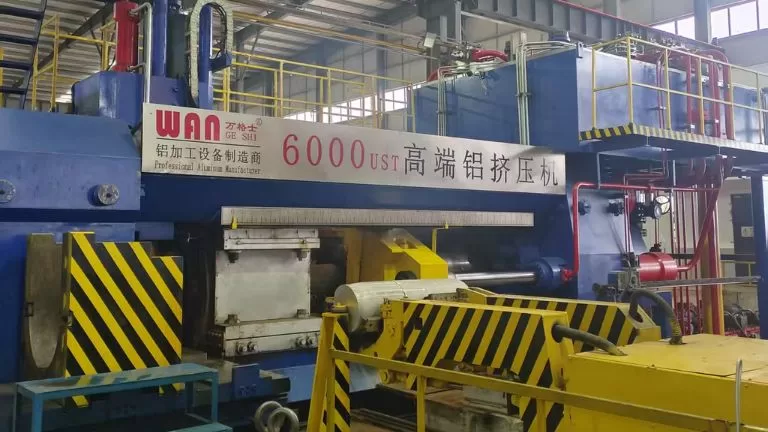
With over 20 years of production experience, we operate more than 40 extrusion lines, including our largest 6000-ton extrusion press. This advanced capacity enables us to manufacture large anodized aluminum heat sinks and profiles tailored to meet diverse industry needs. Our expertise in extrusion allows us to produce high-quality components efficiently, ensuring that we can fulfill both standard and specialized requirements for various applications.
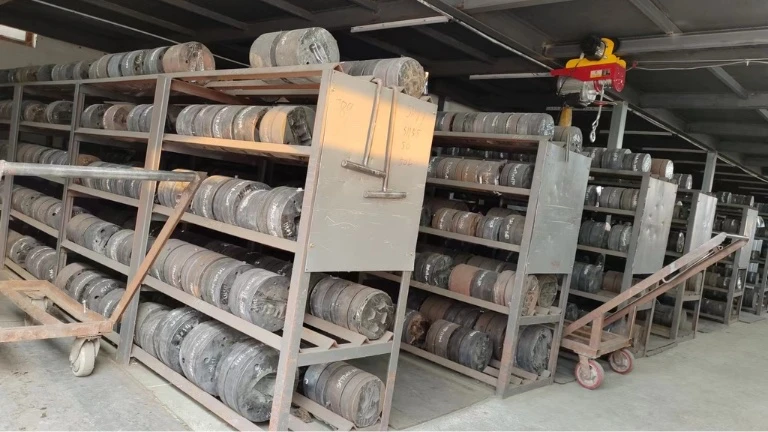 We possess the expertise to design and produce extrusion molds in-house, ensuring precision and efficiency in aluminum profile manufacturing. Our experienced team works closely with clients to develop custom molds based on drawings or samples, ensuring optimal performance for their specific requirements. Typically, the mold production process takes about 7 days, after which we provide samples for client confirmation before beginning full-scale production.
We possess the expertise to design and produce extrusion molds in-house, ensuring precision and efficiency in aluminum profile manufacturing. Our experienced team works closely with clients to develop custom molds based on drawings or samples, ensuring optimal performance for their specific requirements. Typically, the mold production process takes about 7 days, after which we provide samples for client confirmation before beginning full-scale production.
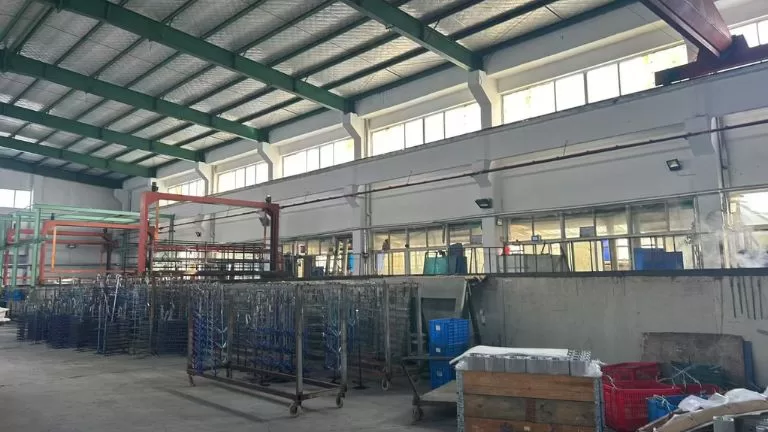
In our anodized aluminum heat sinks production, we offer a range of surface treatment options, including standard anodizing, hard anodizing, and colored anodizing. Our anodizing process accommodates film thicknesses ranging from 10 microns to 65 microns, ensuring optimal surface protection and aesthetic appeal. This variety allows us to meet specific performance and design requirements for our clients across different industries, providing enhanced durability and corrosion resistance for our products.

To provide complete aluminum profile solutions, we offer extensive further processing capabilities. Our services include CNC machining, milling, threading, drilling, precision cutting, punching, welding, and assembly. This range of fabrication options allows us to deliver ready-to-use profiles tailored to exact project specifications, offering unmatched flexibility and reliability to our customers.
Custom Anodized Aluminum Heat Sink from Us
At HTS NEW MATERIALS, we provide custom aluminum extrusions tailored to your specific requirements. With over 40 extrusion lines, we deliver precision-engineered profiles for various industries, including aerospace, automotive, and construction.
- Tailored Cross-Sections: Create unique aluminum profiles with custom molds developed in 7-10 days, including samples for customer confirmation.
- Anodized Surface Treatment: Enhance durability and aesthetics with various anodizing options.
- Precision Machining and Branding: Achieve exact accuracy with cutting, drilling, and milling, plus engraving for logos and text through silk-screening, laser engraving, or milling.
- Efficient Production: Our capacity of 26 tons allows us to complete extrusion production in just 15 days.
Partner with HTS NEW MATERIALS for innovative and reliable custom aluminum extrusion solutions. Contact us today!
RFQ of Extruded Aluminum Profile
HTS New Materials, based in Jiangxi Province, China, is a leading aluminum extrusion manufacturer with over 40 advanced production lines and powerful equipment, including a 6000-ton extrusion press. We produce a wide range of aluminum profiles for industries such as construction, industrial applications, and high-end doors and windows, including thermal break profiles. Our services extend to comprehensive surface treatments like anodizing, powder coating, fluorocarbon coating, and wood grain transfer, as well as advanced machining and fabrication capabilities such as CNC machining, drilling, and welding. Committed to quality and innovation, we deliver tailored aluminum solutions to meet the diverse needs of clients globally.
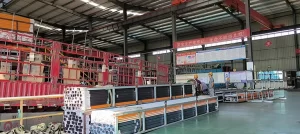


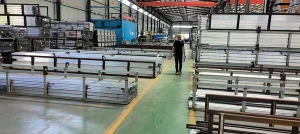



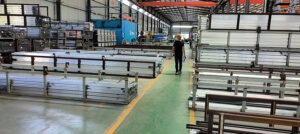
When selecting aluminum for heat sinks, we offer a variety of alloys tailored to different thermal conductivity, strength, and corrosion resistance requirements. Below are the common aluminum material options:
6061 Aluminum:
- Properties: Excellent mechanical properties, weldability, and corrosion resistance.
- Applications: Suitable for general structural components and can be anodized for enhanced surface protection.
6063 Aluminum:
- Properties: Good extrudability and surface finishing capabilities. It offers decent mechanical properties and is often used in architectural applications.
- Applications: Commonly used for heat sinks due to its good thermal conductivity and aesthetic appeal after anodizing.
1050 Aluminum:
- Properties: High thermal and electrical conductivity, excellent corrosion resistance, but lower strength compared to other alloys.
- Applications: Ideal for applications requiring maximum thermal conductivity, such as electronic components.
1100 Aluminum:
- Properties: Excellent corrosion resistance and thermal conductivity, with good workability but lower strength.
- Applications: Often used in heat exchangers and chemical equipment where maximum thermal conductivity is required.
5083 Aluminum:
- Properties: Exceptional performance in extreme environments, high strength, and excellent corrosion resistance, especially in marine applications.
- Applications: Suitable for heavy-duty heat sinks exposed to harsh conditions.
8011 Aluminum:
- Properties: Often used in specialized applications; has good thermal properties, though it is less common than other grades.
- Applications: Utilized in unique or high-performance applications where specific requirements dictate.
The heat treatment of aluminum extrusions determines their mechanical properties, strength, and suitability for specific applications. Among the various heat treatment methods, T5, T6, and T66 are the most commonly used. Here’s an in-depth look:
| Heat Treatment State | Cooling Method | Strength | Key Features and Benefits | Applications |
|---|---|---|---|---|
| T5 | Air cooling (fan) | Moderate | Adequate strength, good dimensional stability, used for architectural purposes. | Windows, doors, curtain walls, building structures. |
| T6 | Water quenching (fast) | High | Higher strength and hardness, ideal for industrial and structural uses. | Automotive, aerospace, machinery, transport parts. |
| T66 | Water quenching (fast) | Very high | Optimized mechanical properties for higher strength and performance demands. | Automotive, rail transportation, high-end machinery. |
Other Heat Treatment States
- T4: Solution heat-treated and naturally aged. Used in applications requiring intermediate strength and enhanced formability.
- T7: Overaged for better stress-corrosion resistance, often used for aerospace and marine purposes.
- O (Annealed): Very soft condition suitable for extensive forming or bending requirements.
- F (As-Fabricated): No heat treatment applied, used in non-critical applications with low strength requirements.
We provide a wide range of machining services for aluminum extrusions to meet specific requirements. These include cutting off/section removal, slotting, drilling holes, tapping threads, bending, and localized stamping to create deformations. For example, we can trim extruded profiles to custom lengths, mill precise grooves, create threaded holes for fasteners, bend profiles into specific shapes, or apply localized stamping to achieve custom forms or deformation.
In addition to these processes, we also offer TIG/MIG welding to join aluminum components for a solid structure. Furthermore, our services include assembly of common accessories, such as brackets, corner connectors, screws, hinges, end caps, and rubber seals, providing complete and ready-to-install profile solutions tailored to your project needs. This ensures that we can handle everything from simple cuts to highly customized fabrication and assembly, all with precision and efficiency.
For custom aluminum extrusion projects, we accept a variety of drawing formats, including CAD files, STEP files, and PDF files. However, for extrusions that require additional machining processes, it’s recommended to provide STEP files, as they ensure precise 3D modeling for machining accuracy.
While PDF files are acceptable, converting them into CAD drawings may result in the loss of certain details, requiring us to manually redraw the design, which could increase lead time. For the fastest and most accurate quotation, we recommend providing CAD files (e.g., DWG/DXF) and STEP files to ensure efficient design evaluation and pricing.
Mold fees are an essential part of the custom aluminum extrusion process. Since every order requires a uniquely designed mold tailored to specific requirements, these molds cannot be used for other products. Therefore, the mold fee is necessary and non-negotiable.
We require 100% upfront payment of the mold fee before mold development begins to ensure timely production. However, as a token of appreciation for your support, we offer a refund of the mold fee or equivalent discounts once the order reaches a certain production volume. Specific policies can be discussed based on your order volume and collaboration details.
Our minimum order quantity (MOQ) varies depending on the size of the product. For smaller-sized products, the MOQ is typically 500kg, while for larger-sized products, it is 2 tons.
We will specify the exact MOQ requirements during the quotation process. If your order quantity does not meet the MOQ, we can still arrange production, but an additional fee will be applied to cover mold preheating and production setup time. Rest assured, this extra fee will be reasonable, and we aim to keep it as minimal as possible to ensure smooth cooperation.
Packaging can be customized according to your needs. Options include using protective film or paper to separate and protect the surface, or foam film for additional surface protection. Products can be palletized or packed into cartons, and the quantity per pallet or carton can be specified by the customer.
The standard packaging involves bundling several pieces together with plastic wrap and then securing them onto pallets. Any packaging requirements beyond the standard will be accommodated, and the associated costs will be clearly provided to the customer.
Mold production typically takes 7 days. After the sample is confirmed, producing a full container load of 26 tons generally requires 14 days for extrusion alone. If surface treatment is required, an additional 3 days will be needed. For machining, extra time will be required depending on the complexity and volume of the machining work. The exact additional time for machining will be determined based on the specific processing requirements.
Aluminum profiles are naturally corrosion-resistant due to the formation of a thin, protective oxide layer when exposed to air or water. This oxide layer is stable and self-repairing, meaning that even if the surface is scratched or cut (such as at exposed ends or during processing), the aluminum will not rust or corrode like iron or steel. Instead, the exposed areas will quickly form a new oxide layer, providing continuous protection against further oxidation.
With proper design, installation, and maintenance, aluminum profiles can last for decades, even in challenging environments. For example, untreated aluminum can easily withstand 20-30 years in outdoor applications, while profiles with surface treatments like anodizing or powder coating can last even longer, often exceeding 50 years. This makes aluminum an excellent choice for applications where durability and long-term performance are essential.
The price of aluminum profiles consists of several components: raw material costs, extrusion processing fees, surface treatment fees, machining costs, and additional packaging fees. Among these, the cost of aluminum as a raw material tends to fluctuate frequently, while other fees remain relatively stable. Due to these fluctuations, our quotations are typically valid for 7 days.
Pricing can be structured in different ways depending on the product and requirements. It can be calculated by weight (e.g., cost per ton), by length (e.g., cost per meter), or by piece (e.g., cost per unit). For products involving extensive machining, such as heat sinks, pricing is generally calculated on a per-piece basis to accurately reflect the additional processing costs. This flexible pricing approach ensures the quote is tailored to the specific needs of the customer.
We can manufacture aluminum profiles in compliance with technical requirements that meet European standards (EN), American standards (ASTM/AA), or other standards as specified by the customer. Custom production is tailored to ensure that the profiles meet the specific standard requirements requested.
Our production equipment is designed for the metric system. If the drawings provided are in the imperial system, we will convert them into metric units for production to ensure accuracy.
It is important to note that while we can machine imperial-threaded holes for fasteners, if you require us to supply matching imperial fasteners, they may not always be available in stock. Custom orders for imperial fasteners typically require a large volume for production. Please consider this when planning your project.
